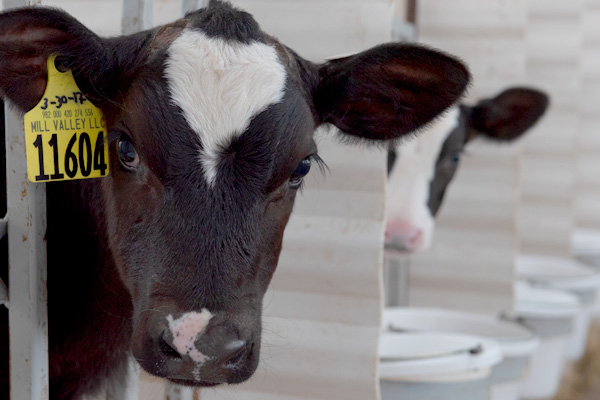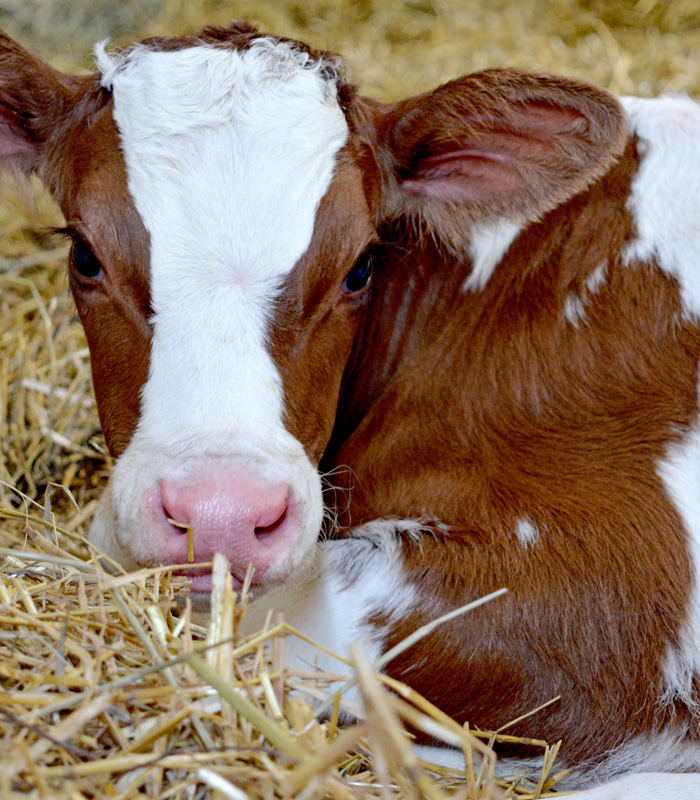Non-pharma solutions to scours are effective and more sustainable.
Written By: Dr. Zach Jannsen, DVM
“Hey you, are you dealing with scours?”
Perhaps you have heard this statement while using the restroom at a recent dairy trade show. While this is a creative and captivating way to get your attention, the reality is, if you are raising calves, you are dealing with scours. Thanks to education and development of new products, tremendous strides have been made in reducing the severity and number of calves lost due to the main causes of calf scours. These primary causes remain the same: bacteria (E. coli, Salmonella sp.), viruses (Rota, Corona), and parasites (cryptosporidia, coccidia). Working with your veterinarian by identifying the timeline of when calves are affected and using diagnostic testing, it is straightforward to determine which pathogen(s) are prevalent on your farm and develop a prevention and treatment plan to “deal” with calf scours.

Prevention of scours in your calves is the best strategy to help them stay healthy and realize the genetic potential we have been working so hard to achieve. Cleanliness is a cornerstone of prevention and it starts in the calving pen by providing a clean area, so the calf is not exposed to that first “manure meal”. It is also critical to keep colostrum harvesting, storage, and administration equipment clean and free of biofilms. Equally as critical is to get the sufficient amount (4 liters) of high quality (50g/L IgG, >22 brix) colostrum into calves as quickly as possible (<6 hours after birth). High quality colostrum is produced by healthy dry cows and springing heifers that are on a vaccination program to cover pathogens endemic to your farm, kept on a proper plane of nutrition, and comfortably housed. Oral antibodies and vaccines administered to the calf at birth can be an effective tool as well.
Although prevention of scours is the objective, even the best calf managers will have to “deal” with calf scours. This means an intervention or treatment. The three main goals of treatment therapy should be to: 1) combat the scours inducing pathogen, 2) meet the calf’s physiologic needs (hydration, energy, acid/base balance), and 3) restore gut health. Early in my career it was not uncommon for farmers to try and combat calf scours by feeding a milk replacer medicated with the mycin twins, “neo” and “terra”. Public perception on overuse of antibiotics and the implementation of the VFD (veterinary feed directive) have curbed this practice. Blindly reaching for an antibiotic to treat calf scours should be critically evaluated. The vast majority of calf scours is caused by Rotavirus and Cryptosporidium, neither of which will respond to antibiotic therapy. Scours causing pathogens such as Salmonella sp. may be resistant to the antibiotics we legally have available to treat calf scours. And, indiscriminate use of antibiotics may harm the natural flora or beneficial bacteria of the calf’s gut.

Critically important in treating calf scours is the selection of an appropriate oral electrolyte solution (OES). This solution must meet the calf’s physiologic needs by providing the proper amount of sodium, amino acids including glycine to promote the absorption of sodium, energy sources such as glucose to correct hypoglycemia, and a buffer to correct metabolic (blood) acidosis with acetate and propionate being the preferred alkalinizing agents. Pay close attention to the osmolarity of the OES, with 400-600 mOsm/L being ideal. Continue to feed milk as it will be the calf’s main source of energy. The old idea of starving the diarrhea causing bugs will also starve the calf. Finally, resist the urge to mix the electrolyte into the milk or milk replacer to save labor. This practice can cause the osmolarity to increase and actually worsen diarrhea by drawing fluid into the intestines. Calves will also benefit from the hydration that the additional water mixed with the electrolyte provides.
All-natural options for combatting scours causing pathogens have demonstrated efficacy. Yeast cell wall, a.k.a. MOS (mannan oligosaccharides) can bind to pathogens before they have the ability to attach and destroy the absorptive layer of the small intestine. In addition, these compounds act as prebiotics or nutritional sources for beneficial bacteria such as Lactobacillus. Oregano oil with the active ingredients of carvacrol and thymol can inhibit pathogens, including parasites and have the added benefit of stimulating appetite.
Finally, providing a probiotic product, also commonly referred to as direct-fed microbials (DFMs) can boost the calf’s immune system and restore gut health after a scouring episode. These products contain targeted beneficial bacteria to enhance the normal microbiota and may also contain immune stimulating vitamins such as vitamin A and vitamin E. Calf raisers can add them to milk, milk replacer or feed for 7-10 after treatment for scours. It is also common to feed a probiotic product for the first 14 days of life which represent the highest risk in a calf’s life for contracting scours causing organisms.
Work closely with your veterinarian and animal health provider to implement protocols for effective prevention and treatment strategy when you have to “deal” with calf scours.
